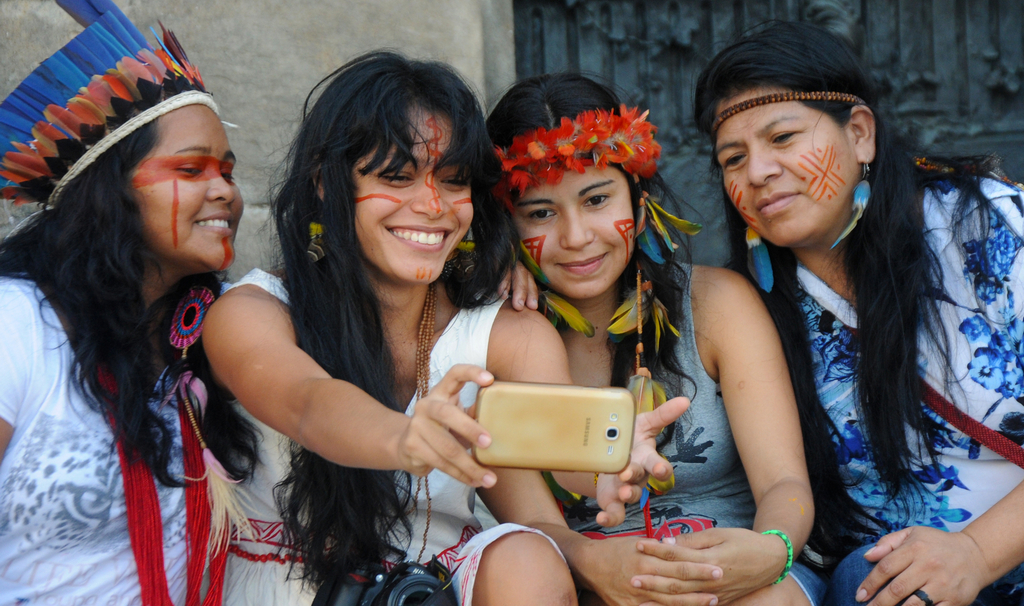Traditional vs. Modern: Clash or Coexistence?
As societies evolve, the interplay between traditional cultural practices and modern lifestyles presents both challenges and opportunities. This dynamic tension raises important questions about identity, continuity, and adaptation.
How can traditional cultures retain their essence in a rapidly changing world?
This article explores the ways in which traditional practices adapt to modernity, examining instances of clash and coexistence, and highlighting the delicate balance required to preserve cultural heritage while embracing progress.
The Dynamics of Cultural Adaptation

Preservation and Innovation
Traditional cultures are rooted in practices, rituals, and values passed down through generations. Preservation is essential to maintain a sense of identity and continuity. However, innovation is equally important to keep these practices relevant.
This balance can be seen in how traditional crafts, ceremonies, and languages are preserved while incorporating new techniques, technologies, and ideas.
For example, Japanese tea ceremonies continue to honor ancient rituals but have also adapted to modern settings. Tea masters use contemporary utensils and settings, making the practice accessible to a broader audience without diluting its essence.
Conflict and Compromise
The clash between tradition and modernity often arises from differing values and priorities. Traditional practices may emphasize community, spirituality, and continuity, while modern lifestyles prioritize individuality, technology, and change.
These differences can lead to conflicts, requiring communities to find compromises that respect both perspectives.
An illustrative case is the wearing of traditional attire in professional settings. In many cultures, traditional dress is reserved for special occasions.
However, some professionals integrate traditional elements into their modern work attire, finding a compromise that honors their heritage while conforming to contemporary norms.
Case Studies: Coexistence in Practice
Various cultures around the world have successfully integrated traditional practices into modern life, demonstrating that coexistence is not only possible but also enriching. These case studies highlight innovative approaches to maintaining cultural heritage in the face of change.
Indigenous Communities and Technology
 Indigenous communities worldwide are leveraging technology to preserve and promote their cultures. Digital platforms allow for the documentation and sharing of traditional knowledge, languages, and practices.
Indigenous communities worldwide are leveraging technology to preserve and promote their cultures. Digital platforms allow for the documentation and sharing of traditional knowledge, languages, and practices.
This technological integration helps prevent cultural erosion while providing new ways for younger generations to engage with their heritage.
For instance, the Māori of New Zealand use online platforms to teach the Māori language and traditional crafts. Virtual reality is also employed to create immersive experiences of cultural sites and rituals, making them accessible to a global audience and ensuring their preservation for future generations.
Traditional Medicine and Modern Healthcare
 Traditional medicine practices, such as Ayurveda and Traditional Chinese Medicine (TCM), have found a place in modern healthcare systems. These practices are integrated into contemporary medical frameworks, offering complementary treatments alongside conventional medicine.
Traditional medicine practices, such as Ayurveda and Traditional Chinese Medicine (TCM), have found a place in modern healthcare systems. These practices are integrated into contemporary medical frameworks, offering complementary treatments alongside conventional medicine.
Ayurvedic centers in India, for example, combine ancient healing techniques with modern wellness facilities, attracting both locals and international visitors. This integration not only preserves traditional knowledge but also enhances its credibility and applicability in today's world.
Cultural Festivals in Urban Environments
Cultural festivals are another area where tradition and modernity intersect harmoniously. These festivals, often rooted in ancient rituals and celebrations, are adapted to urban environments, making them relevant and engaging for contemporary audiences.
The Diwali festival in India is a prime example. While the essence of the festival—celebrating light over darkness—remains unchanged, modern celebrations incorporate technology with elaborate light shows, fireworks, and digital communications.
This blend of old and new ensures that the festival remains vibrant and meaningful in a modern context.
Challenges and Opportunities in Cultural Preservation
While the integration of traditional practices into modern life offers many benefits, it also presents challenges. Addressing these challenges requires careful consideration and strategic action to ensure that cultural heritage is preserved and respected.
Commercialization and Authenticity
One significant challenge is the commercialization of traditional practices. While commercial opportunities can provide economic benefits and increased visibility, they also risk diluting the authenticity of cultural practices.
Balancing economic gain with cultural integrity is crucial.
For example, traditional crafts sold in global markets must maintain their cultural significance and quality standards.
Artisans often face pressure to produce cheaper, mass-market versions of their work, which can undermine the authenticity and value of the traditional craft.
Cultural Sensitivity and Appropriation
Cultural sensitivity is essential when integrating traditional practices into modern contexts. There is a fine line between cultural appreciation and appropriation. Ensuring that traditional practices are respected and not exploited requires awareness and sensitivity.
The use of Native American symbols and rituals in fashion and popular culture is a contentious issue. While some see it as a form of homage, others view it as disrespectful and exploitative.
Engaging with cultural representatives and ensuring that practices are used appropriately and respectfully is vital.
Education and Awareness
Educating the public about the value and significance of traditional practices is key to their preservation. Awareness campaigns, educational programs, and community initiatives can foster respect and appreciation for cultural heritage.
Museums and cultural institutions play a significant role in this regard. The Smithsonian Institution's National Museum of the American Indian, for example, provides educational resources and programs that highlight the richness of Native American cultures and their relevance today.
Strategies for Sustainable Cultural Integration
To ensure that traditional practices thrive in modern contexts, strategic approaches are necessary. These strategies can help bridge the gap between tradition and modernity, fostering a harmonious coexistence.
Collaborative Approaches
Collaboration between traditional practitioners and modern institutions can facilitate the integration of cultural practices into contemporary life.
Partnerships between indigenous communities and academic institutions, for example, can lead to the documentation and preservation of traditional knowledge.
The partnership between the San people of Southern Africa and researchers at the University of Cape Town exemplifies this approach. Together, they document and study traditional ecological knowledge, ensuring its preservation and application in modern conservation efforts.
Adaptive Practices
Adapting traditional practices to fit modern lifestyles without compromising their essence is crucial. This involves modifying certain aspects of the practice while retaining its core values and principles.
Yoga, originally a spiritual and ascetic discipline in India, has been adapted globally as a popular form of physical exercise and mental well-being.
While modern yoga classes may focus more on physical postures, many still emphasize the practice's meditative and spiritual aspects, preserving its holistic nature.
Policy and Advocacy
Government policies and advocacy efforts can support the preservation and promotion of traditional practices. Legal protections, funding for cultural initiatives, and public awareness campaigns are essential tools in this regard.
The United Nations Educational, Scientific and Cultural Organization (UNESCO) plays a pivotal role in this area. Through its Intangible Cultural Heritage program, UNESCO provides recognition and support for traditional practices worldwide, helping to safeguard them for future generations.
Conclusion: A Harmonious Coexistence
The coexistence of traditional and modern practices is not only possible but also beneficial. By embracing both preservation and innovation, communities can ensure that their cultural heritage remains vibrant and relevant in the contemporary world.
Through strategic adaptation, collaboration, and education, traditional practices can thrive alongside modern lifestyles, enriching societies and fostering a deeper understanding of our shared human heritage.
Understanding and respecting the delicate balance between tradition and modernity allows for a harmonious coexistence that honors the past while embracing the future. As we navigate this complex landscape, the goal should always be to preserve the essence of traditional practices, ensuring they continue to inspire and enrich our lives in meaningful ways.
Sources
UNESCO's Intangible Cultural Heritage
Smithsonian Institution's National Museum of the American Indian
The Mere Exposure Effect
Physical Attractiveness































